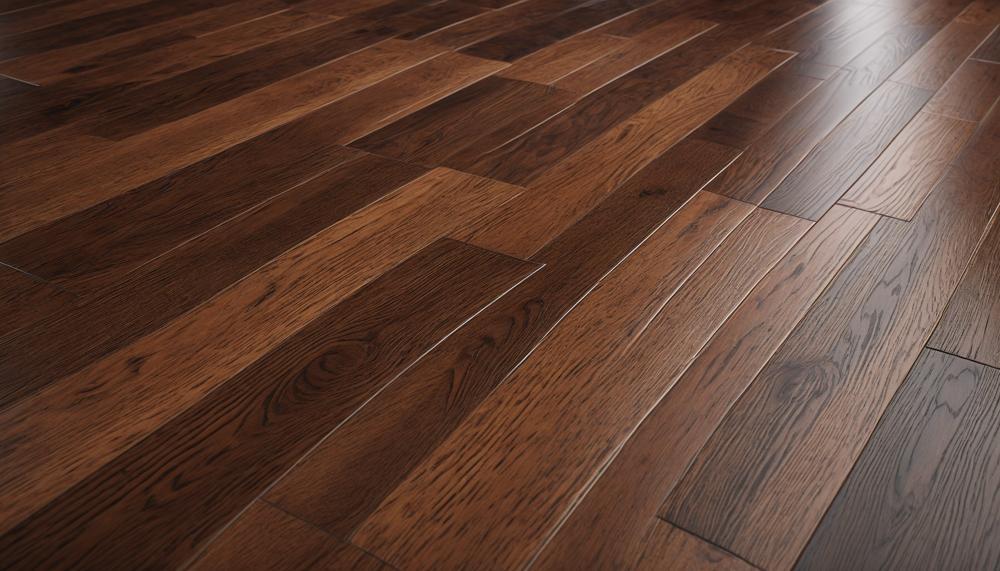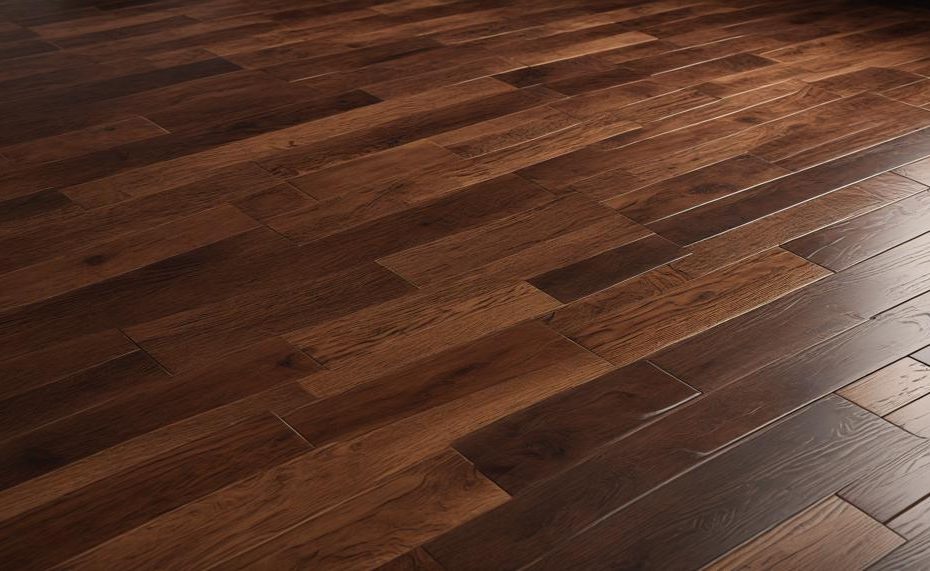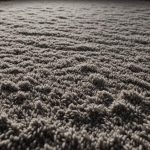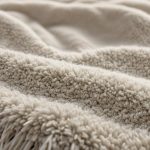Acclimating hardwood flooring might seem like a minor step, but it’s a game-changer for ensuring your floors remain flawless for years to come. Imagine going through the entire installation process only to find your beautiful new floors warping or buckling within weeks.
The secret to avoiding this nightmare lies in proper acclimation, which allows the wood to adjust to the humidity levels of your home before it’s permanently fixed in place.
To get it right, you’ll need to lay out the boards on a flat surface for 48-72 hours, ensuring there’s good air circulation and no added weight on top. Skipping this step, or doing it incorrectly, can lead to some major headaches down the line, like gaps between planks or unsightly warping that could cost you dearly in repairs.
Here’s what you need to know to stack your hardwood flooring correctly for acclimation:
- Timing is Key: Allow at least 48-72 hours for the wood to acclimate in the room where it will be installed.
- Proper Spacing: Lay the boards flat with spacers between each one to allow air circulation.
- Avoid Direct Heat: Keep the wood away from direct heat sources and drafts to prevent uneven acclimation.
- Even Distribution: Don’t stack too many boxes on top of each other; spread out the boards evenly.
- No Added Weight: Ensure nothing is placed on top of the stacked wood to avoid pressure and potential damage.
By following these steps, you’ll be setting your hardwood floors up for success, ensuring they remain stable, durable, and beautiful for the long haul.

Contents
- 1 Step by Step Processes for How to Stack Hardwood Flooring for Acclimation
- 2 Tips for How to Stack Hardwood Flooring for Acclimation
- 2.1 Allow Sufficient Acclimation Time
- 2.2 Store on a Flat Surface
- 2.3 Maintain Proper Temperature and Humidity
- 2.4 Use Spacers for Air Circulation
- 2.5 Avoid Direct Heat and Drafts
- 2.6 Prevent Moisture Exposure
- 2.7 Look for Signs of Poor Acclimation
- 2.8 Avoid Stacking Boxes on Top of Each Other
- 2.9 Check Manufacturer’s Guidelines
- 3 What is the Importance of Proper Hardwood Flooring Acclimation?
- 4 What is the Best Way to Stack Hardwood Flooring for Acclimation?
- 5 How Can You Prevent Your Hardwood Flooring From Warping During the Acclimation Process?
- 6 What Environment is Best for Stack Hardwood Flooring During the Acclimation Period?
- 7 Conclusion
Step by Step Processes for How to Stack Hardwood Flooring for Acclimation
Hardwood flooring should acclimate for at least 48 to 72 hours before installation. This process helps the wood adjust to the room’s temperature and humidity, preventing future issues like warping or buckling.
Step-by-Step Process for How to Stack Hardwood Flooring for Acclimation:
| Step | Details | Notes |
| Environment Preparation | Temperature: 60°F to 80°F Humidity: 30% to 50% |
Check with a hygrometer |
| Unpacking | Open boxes but leave planks inside | Allows air to circulate |
| Staggered Stacking | Use spacers between each layer | Prevents warping |
| Avoiding Pressure and Moisture | Keep off the ground Avoid direct heat and drafts |
Use pallets or supports |
| Air Circulation | Spread planks evenly | Promotes even acclimation |
Tips for How to Stack Hardwood Flooring for Acclimation
Properly stacking hardwood flooring for acclimation is crucial to ensure the longevity and stability of your new floors. Here are some essential tips to follow:
Allow Sufficient Acclimation Time
Hardwood flooring needs at least 48-72 hours to acclimate to the new environment. This period allows the wood to adjust to the room’s humidity and temperature, preventing future issues such as warping or cupping.
Store on a Flat Surface
Ensure the boards are laid out on a flat surface. Avoid uneven stacking, which can cause the boards to bend or warp. Keeping them level is vital for maintaining their integrity.
Maintain Proper Temperature and Humidity
Keep the room temperature between 65-85°F and the relative humidity between 35%-55%. Consistent climate control is key to proper acclimation.
Use Spacers for Air Circulation
Place spacers between the boards to allow air to circulate freely around each piece. This helps in even acclimation and prevents moisture from getting trapped between the boards.
Avoid Direct Heat and Drafts
Store the boards away from direct heat sources, such as radiators, and avoid drafts from windows or doors. Excessive heat or cold can affect the acclimation process adversely.
Prevent Moisture Exposure
Make sure the boards are kept dry during the acclimation period. Exposure to moisture can lead to swelling or other moisture-related damage.
Look for Signs of Poor Acclimation
Watch for indicators like gaps between planks or buckling. These signs suggest that the boards are not properly acclimated and need more time before installation.
Avoid Stacking Boxes on Top of Each Other
Spread out the boards evenly without stacking boxes on top of each other. This allows each piece to acclimate uniformly.
Check Manufacturer’s Guidelines
Always follow the specific guidelines provided by the flooring manufacturer. They often provide detailed instructions tailored to their products.
What is the Importance of Proper Hardwood Flooring Acclimation?
Properly acclimating hardwood flooring before installation is essential to prevent issues related to moisture imbalance, which can lead to warping, cupping, or gapping. Wood naturally expands and contracts with changes in humidity and temperature.
By allowing the wood to adjust to the room’s conditions before installation, you ensure that it remains stable and retains its beauty and durability over time.
Key Reasons for Proper Acclimation:
- Prevent Warping and Cupping: Unacclimated wood can absorb excess moisture or dry out, leading to significant changes in dimensions, which might cause warping or cupping.
- Reduce Gapping: Proper acclimation helps the wood settle at the optimal moisture level, reducing the likelihood of gaps forming between planks.
- Increase Longevity: Acclimated wood is more likely to maintain its integrity over the years, contributing to a longer-lasting floor.
Steps to Acclimate Hardwood Flooring:
- Stacking and Spacing: Lay the flooring flat, with space between the planks to allow air circulation.
- Time: Allow the wood to acclimate for at least 48 to 72 hours, or more, depending on the manufacturer’s recommendation.
- Temperature and Humidity: Maintain the room at a consistent temperature of 60-80°F and humidity level of 30-50%.
- Moisture Testing: Use a moisture meter to check the moisture content of both the hardwood and the subfloor. The difference should not exceed 2-4%.
Environmental Considerations:
| Factor | Optimal Range | Impact |
| Temperature | 60-80°F | Ensures wood adjusts without excessive expansion or contraction. |
| Humidity | 30-50% | Maintains wood moisture content to prevent structural issues. |
| Time | 48-72 hours | Allows wood to stabilize at room conditions. |
What is the Best Way to Stack Hardwood Flooring for Acclimation?
To properly stack hardwood flooring for acclimation, follow these steps:
- Store in the Installation Room: Ensure the hardwood flooring is stored in the room where it will be installed. This allows the wood to adjust to the specific temperature and humidity conditions of that environment.
- Lay Out Flat: Lay out the boards flat on a clean, dry surface. Avoid stacking them directly on the floor to prevent moisture absorption from the subfloor.
- Use Spacers: Place spacers or small pieces of wood between each layer of boards. This helps with air circulation, allowing the wood to acclimate evenly.
- Allow Sufficient Time: Let the flooring acclimate for at least 48 hours, though longer periods (up to a week) can be beneficial in environments with significant humidity variations.
- Monitor Conditions: Keep the room at normal living conditions with stable temperature and humidity levels. Aim for a humidity range between 30% and 50%, and a temperature between 60°F and 80°F (15°C and 27°C).
- Check for Swelling or Shrinking: Regularly inspect the boards for any signs of swelling or shrinking. This can indicate improper acclimation or environmental conditions that need adjusting.
- Avoid Heavy Stacking: Do not stack the boxes too high. Heavy stacks can prevent adequate air circulation and cause uneven acclimation.
- No Weight on Top: Ensure no weight is placed on top of the boards during acclimation, which can lead to uneven pressure and potential warping.
How Can You Prevent Your Hardwood Flooring From Warping During the Acclimation Process?
| Step | Description | Details |
| Inspect Planks | Check for imperfections | Before stacking, examine each plank for visible defects and address any issues. |
| Use Spacers | Allow air circulation | Place spacers between each plank to ensure proper air flow and even moisture distribution. |
| Stack Evenly | Maintain stability | Ensure stacks are level and even to prevent shifting and instability. |
| Plastic Sheeting | Protect from moisture | Cover the stacks with plastic sheeting on all sides to shield from excess moisture. |
| Support Blocks | Prevent direct floor contact | Place wooden blocks under the stacks to keep them off the ground and allow air circulation beneath. |
| Monitor Conditions | Control humidity and temperature | Maintain humidity levels between 30-50% and temperature between 60-80°F. |
| Re-Stack if Needed | Check and adjust | Periodically check the stacks for stability and restack if necessary to maintain proper conditions. |
| Avoid Extreme Conditions | Select appropriate areas | Do not stack in places with fluctuating temperatures or humidity levels. |
Properly stacking hardwood flooring during acclimation is essential for preventing warping, cupping, and buckling.
By using spacers for air circulation, covering stacks with plastic sheeting, and maintaining optimal environmental conditions, you can ensure your flooring adjusts smoothly to its new environment.
Regular monitoring and adjustments will help achieve a seamless and stable installation.
What Environment is Best for Stack Hardwood Flooring During the Acclimation Period?
The ideal environment for stacking hardwood flooring during the acclimation period is pivotal for achieving a flawless installation. Several key factors must be meticulously considered to ensure the wood adjusts properly to the conditions of the installation site, preventing future issues like warping or buckling.
| Temperature | Humidity | Air Circulation |
| Maintain a consistent temperature between 60-80°F (16-27°C). Sudden fluctuations in temperature can cause the wood to expand or contract, leading to gaps or warping. | Keep humidity levels between 35-55%. Use a hygrometer to monitor and maintain these levels. Excessive moisture or dryness can severely damage the wood, causing it to swell or shrink. | Ensure good air circulation around the stacks of hardwood. This prevents stagnant air pockets, which can create uneven moisture content across the planks, leading to uneven flooring after installation. |
| Flat Surface | Spacing | Protection |
| Stack the flooring on a flat, stable surface. This helps to prevent any bowing or warping during the acclimation period. | Leave adequate space between each plank to allow for air movement. Avoid stacking the boxes on top of each other. Proper spacing ensures even acclimation and prevents mold growth. | Use plastic sheeting or protective covers to shield the wood from dust and debris. However, do not completely seal the wood, as it needs to breathe to acclimate properly. |
Each of these factors contributes to a stable and durable hardwood floor. Ignoring any of these can lead to long-term problems and void any product warranties.
By ensuring the environment meets these criteria, you set the foundation for a beautiful and lasting hardwood floor.
Conclusion
Acclimating hardwood flooring is the unsung hero of a flawless installation. Without proper acclimation, you risk your beautiful floors warping, buckling, or developing unsightly gaps. To prevent these issues, follow a few essential steps.
Start by allowing the wood to acclimate for at least 48-72 hours in the room where it will be installed. This step ensures the wood adjusts to the room’s temperature and humidity. Lay the boards flat on a clean, dry surface, and use spacers to promote air circulation. Avoid stacking the boxes directly on top of each other and keep them off the ground using pallets or supports to prevent moisture damage.
Maintain a consistent room temperature between 60°F to 80°F and a humidity level between 30% to 50%. Keep the wood away from direct heat sources and drafts to ensure even acclimation. By paying attention to these details, you’ll secure the long-term stability and beauty of your hardwood floors.





